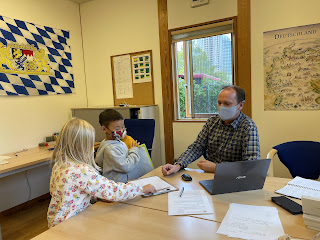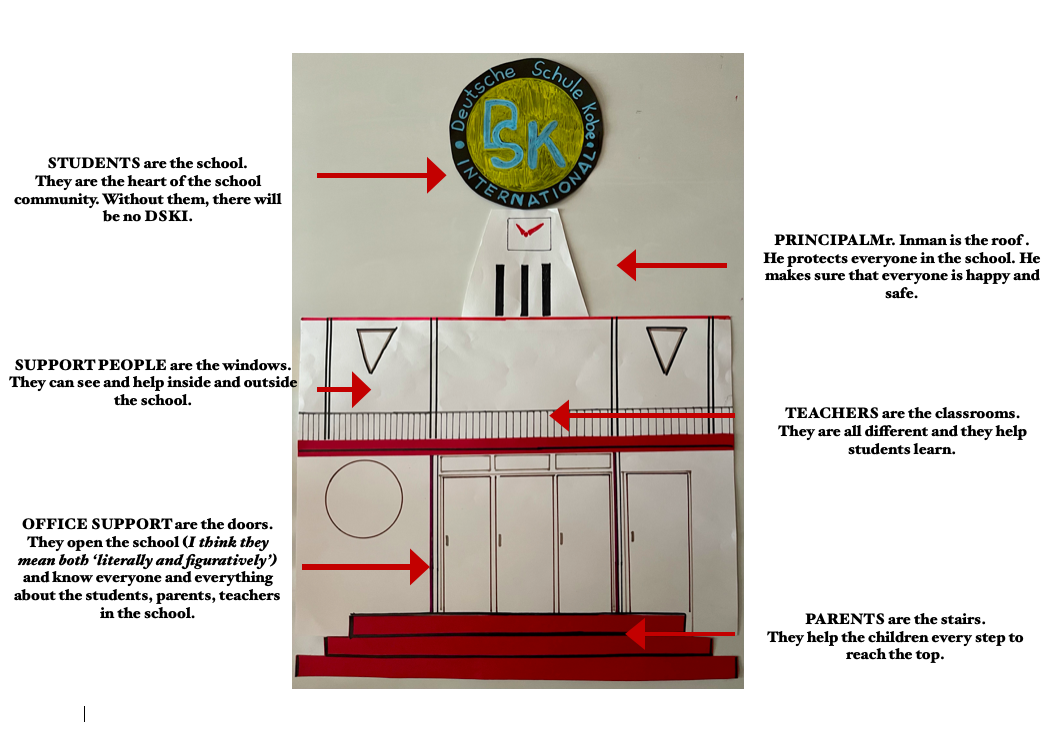"It takes a whole village to raise a child."
Our DSKI Community
After learning that they did not know most of the people in the school community, the Preschoolers took the time to go around the campus to get to know these people.
They brought with them a very important TOOL to FIND OUT more about the roles and responsibilities of the people in the DSKI Community - QUESTIONS.
They asked the TEACHERS.
"Why are you a teacher?"
"What makes you important in the school?"
They asked the PRINCIPAL.
"Why do you clean the whole school?"
"Do you like your job and why?"
"Why do you work or help the school?"
They asked the OFFICE people.
"What is your work in the office?"
They asked the STUDENTS.
"What are the responsibilities of students?"
They asked the PARENTS.
"How do you help the school?"
Then we talked about the responses in class. They came up with a group of important people that make up the DSKI community.
Principal
Office People
Support People
Parents
Teachers
Students
What is it like?
How does it work?
FORM
They described what the school looks like.
They named many parts of the school such as: the playground, garden, flags, doors, stairs, roof, the building etc.
They then connected the parts to its purpose, or...
FUNCTION
They answered the question:
What are the uses of the different parts of the school?
INFORMATION COMPUTER TECHNOLOGY (ICT)
The preschoolers worked with a partner to explore the different features in SEESAW. Together they answered activities in Math using blocks and manipulative.
They also practiced RESPONSIBILITY when borrowing and returning laptops in the cart.



















Comments
Post a Comment